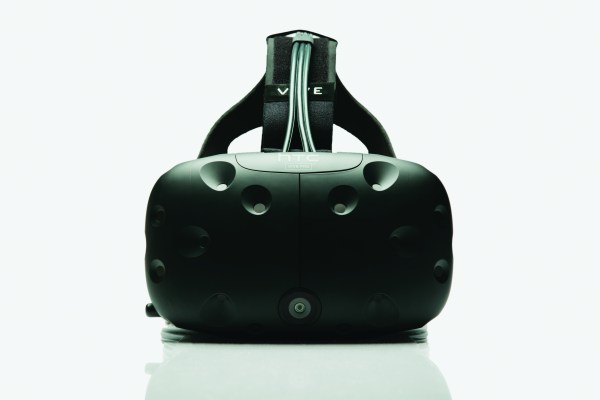The HTC-Valve partnership, which uncloaked last spring to reveal the pair working on a virtual reality experience called Vive, continues to push towards a consumer release — with their VR headset slated to ship in April 2016 — hotfooting it after rival headset Oculus Rift, due to start shipping to consumers from March.
HTC has now confirmed it will be opening up pre-orders for Vive on February 29. It has yet to announce the pricing for the consumer Vive headset — but we’ll presumably find out at the end of next month.
In an interview with The Telegraph, CEO Cher Wang said the smartphone maker has refocused its efforts away from phones — dubbing VR “more important”. And even hinting it might be contemplating a retreat from building typical smartphones entirely in the not too distant future.
The Taiwanese company has certainly struggled to stand out in an increasingly crowded Android OEM phone space in recent years. And while there are some big bets being placed on VR — by the likes of Facebook-owned Oculus and PlayStation maker Sony, to name two — there are still far fewer players at this nascent stage, making it a relatively uncontested arena for HTC to play in.
However that’s in no small part because, unlike smartphones, consumer demand for VR is unproven. And high profile bets or not, the question of whether a notoriously tricky technology can be made to stick this time around remains very unclear. Yet, even with that virtual fog on the horizon, HTC is apparently calculating there is a higher potential success rate for it in VR than in sweating to compete with the slick marketing machinery of smartphone rivals like Apple and Xiaomi.
Which perhaps says more about the reality of the smartphone market (where either brand or affordability take all) than it does about the promise of VR.
“Now we are more realistic,” Wang told the newspaper, when asked if HTC would fold up its smartphone business this year. “We feel that we should apply our best design to different type of sectors. Yes, smartphones are important, but to create a natural extension to other connected devices like wearables and virtual reality is more important.
“We have a vision of smartphones with different types of form factors, it won’t always look like this.”
“With virtual reality, technology becomes limitless. You can inhabit a different world with a head mount. Think how it could change surgery, education, science, even shopping,” she added, taking a rose-tinted view of what VR could be (as well she must).
For its part, rival Oculus opened up pre-orders for its Rift VR headset last week, finally revealing a consumer price-tag that’s $1 short of $600 — and triggering a bevy of complaints that the headset is not priced to reach the mainstream.
Not least because consumers also need a powerful enough PC to power the Rift (or the Vive), so that’s another circa $1,000+ worth of required hardware to factor in to the all-in VR cost.
One new detail that emerged about the Vive at CES is the headset has been tweaked to include a front-facing camera, allowing wearers to experience a mixed reality view — with the tech capable of blending real-world objects into a virtual environment, rather than simply offering the pure escapism of VR.
Whether ‘hybrid reality’ proves any more compelling to the average consumer than pure-play VR remains to be seen. But 2016 should at least deliver an early verdict on the latest VR reboot.
